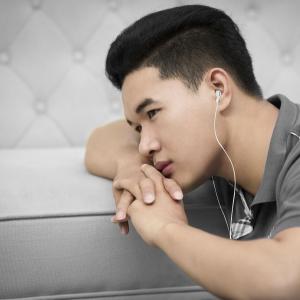Physical And Emotional Symptoms of Social Anxiety Disorder
By definition, social anxiety disorder (SAD) is an overwhelming physical and mental response to everyday social interactions, one that generally involves a fear that one is constantly being watched and/or judged by others who are waiting for that person to do something that will embarrass themselves.
Symptoms of Social Anxiety Disorder
Symptoms of social anxiety disorder can be divided into two types: Emotional and physical symptoms.
Physical symptoms of SAD include:
- Profuse sweating
- Blushing
- Trembling
- Rapid heartbeat
- Muscle tension
- Nausea and/or vomiting
- Difficulty Speaking
Emotional symptoms of SAD include:
- Fear of social situations where you don't know anyone
- Fear of being judged socially
- Fear of others noticing your anxiety
- Dread of upcoming social events
- Fear of potential for embarrassment or humiliation
Diagnosis of Social Anxiety Disorder
Therapists and other qualified health professionals generally rely on the criteria set forth in the Diagnostic and Statistical Manual of Mental Disorders (DSM-IV) to make a diagnosis. Some of the criteria they look for include:
- A substantial and ongoing fear of social or performance situations in which embarrassment, rejection, or scrutiny are possible
- Physical symptoms almost always appear when confronted with social situations
- The patient knows this anxiety is unreasonable but they can't do anything about it
- The anxiety forces a lifestyle change that allows them to avoid many social situations
- The anxiety interferes with one's daily life and activities
- Although a diagnosis of social anxiety disorder can only be made by a qualified health
professional, there are social anxiety tests one can take online to help determine if maybe one should see a therapist who specializes in treating social anxiety disorder.
Treatments for Social Anxiety Disorder
There are a number of treatments for social anxiety disorder. Arguably the most widely used form of treatment is cognitive-behavioral therapy (CBT).
Following CBT, perhaps the next most commonly used treatment involves some form of medication.
Medications used to treat SAD include:
- Antidepressants
- Benzodiazepines
- Beta-Blockers
Sometimes Hypnotics like Ambien are also used but to a much lesser extent than any of the classes of drugs listed above.
One should keep in mind that medications may treat the symptoms of social anxiety disorder but they do not treat the underlying problem. CBT can do that. Medications are good for symptom control, but they do not address the underlying reasons for one's experiencing social anxiety disorder.
Photo: Pixabay






